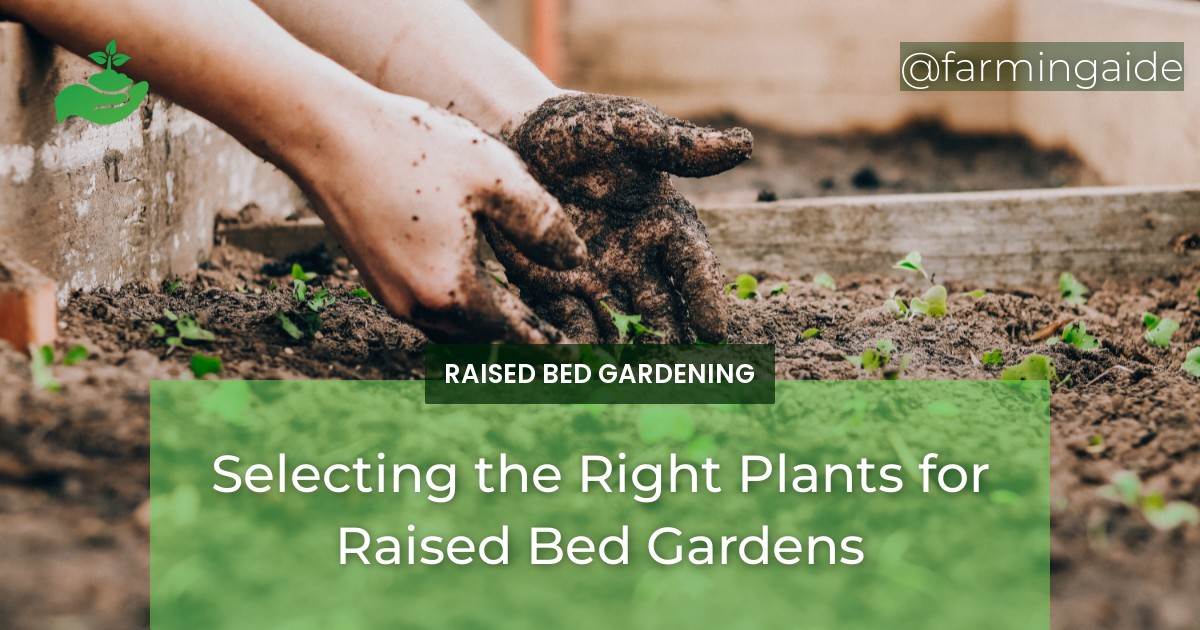Raised bed gardens can quickly turn your yard into a sanctuary of color, texture, and beauty. But, before you start planting, you’ll need to know how to select the right plants for your particular garden style.
In this article, we’ll answer your questions about raised bed gardens and explain how to go about selecting right plants for your space. We will also describe how careful selection of plants can save you time and money, while helping to bring out the beauty of your garden. So, let’s get started!
Table of Contents
Factors to Consider When Choosing Plants for Raised Beds
Plant selection is crucial when it comes to raised bed gardening as it greatly affects the productivity and growth of your garden. Here are the main factors you should consider when choosing the right plants for your raised bed garden:
Location and Environment
Sun exposure
- Position your raised bed in a sunny area that receives at least 6 hours of sunlight daily.
- Choose plants that thrive in full sun, partial sun or shade, depending on the amount of sunlight the location receives.
Soil type and quality
- Test your soil to determine its pH level and nutrient contents. This will help you select plants that will thrive in your soil.
- Invest in high-quality soil that is rich in organic matter, as raised beds tend to dry out faster and require more nutrients.
Climate
- Choose plants that are suitable for your climate and the season in which you are planting.
- Consider planting warm-season crops such as tomatoes, peppers, and eggplants in the spring and cool-season crops such as lettuce, spinach, and kale in the fall.
Plant Size
Height and Spread
- Consider the height and spread of your plants when selecting them for your raised bed garden.
- Plant taller plants towards the back of the bed and shorter plants towards the front to ensure proper sunlight exposure for each plant.
Root Depth
- Consider the root depth of your plants when selecting them for your raised bed garden.
- Choose plants with shallow roots such as lettuce and herbs for shallow raised beds, while plants with deeper roots such as tomatoes and carrots are suitable for deeper raised beds.
Companion Planting
Plants that grow well together
- Companion planting involves planting different plants together to mutually benefit each other.
- For example, planting basil near tomatoes can improve the flavor and growth of the tomatoes while also repelling pests.
Plants to avoid growing together
- Some plants can inhibit the growth of other plants in close proximity.
- For example, planting onions near beans can stunt the growth of the beans, so it’s best to avoid planting them together.
ALSO READ
Suitable Vegetable, Herb, and Flower Varieties
Vegetables
Tomatoes
- Tomatoes are one of the most popular and versatile crops to grow in raised beds.
- Choose determinate varieties such as Roma and San Marzano for smaller raised beds and indeterminate varieties such as Big Boy and Early Girl for larger raised beds.
Peppers
- Peppers are a great addition to raised bed gardens as they are easy to grow and produce abundant fruits.
- Choose sweet or hot pepper varieties depending on your preference.
Leafy Greens
- Leafy greens such as lettuce, spinach, and kale are perfect for raised bed gardens as they are easy to grow, require minimal space, and can be harvested multiple times.
- Choose different varieties of greens that are suitable for your climate and the season in which you are planting.
Root Vegetables
- Root vegetables such as carrots, beets, and radishes are suitable for deeper raised beds with well-draining soil.
- Choose varieties that are suitable for your climate and the season in which you are planting.
Herbs
Basil
- Basil is a popular herb that thrives in raised bed gardens.
- Choose different varieties of basil such as Sweet Basil, Thai Basil, and Lemon Basil depending on your culinary needs.
Parsley
- Parsley is an easy-to-grow herb that adds flavor and nutrition to your meals.
- Choose flat-leaf or curly-leaf varieties depending on your preference.
Rosemary
- Rosemary is a fragrant herb that adds a Mediterranean flavor to your dishes.
- Choose a trailing or upright variety depending on the size and shape of your raised bed garden.
Thyme
- Thyme is a hardy herb that adds a savory flavor to your meals.
- Choose different varieties of thyme such as Lemon Thyme and English Thyme depending on your culinary needs.
Flowers
Marigolds
- Marigolds are a colorful and easy-to-grow flower that can help repel pests in your raised bed garden.
- Choose different varieties of marigolds such as French Marigolds and African Marigolds depending on your preference.
Zinnias
- Zinnias are a beautiful and low-maintenance flower that can attract pollinators to your raised bed garden.
- Choose different varieties of zinnias such as Giant Zinnias and Dwarf Zinnias depending on your preference.
Petunias
- Petunias are a popular and versatile flower that can add color and fragrance to your raised bed garden.
- Choose different varieties of petunias such as Wave Petunias and Grandiflora Petunias depending on your preference.
RELATED ARTICLES:


